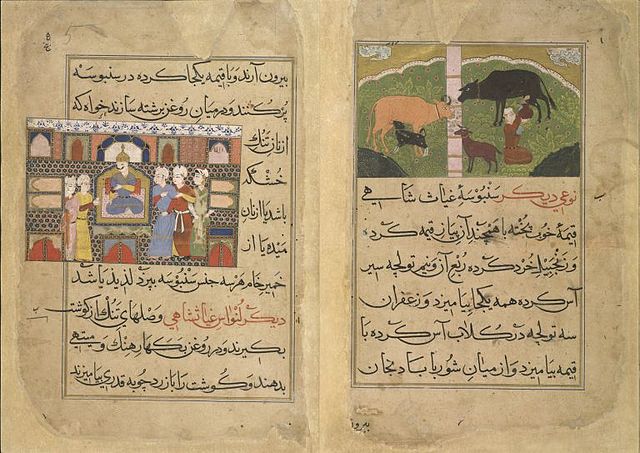A samosa is a fried South Asian pastry with a savoury filling, including ingredients such as spiced potatoes, onions, peas, meat, or fish. It is made into different shapes, including triangular, cone, or crescent, depending on the region. Samosas are often accompanied by chutney, and have origins in medieval times or earlier. Sweet versions are also made. Samosas are a popular entrée, appetizer, or snack in the cuisines of South Asia, the Middle East, Central Asia, East Africa and their South Asian diasporas.
Samosas with chutney in India.
Persian manuscript Nimatnama-i-Nasiruddin-Shahi explaining how samosas should be cooked
Medieval Indian cookbook with Persian manuscript Nimatnama-i-Nasiruddin-Shahi (c. 16th century) showing samosas being served
Samosas before being fried, at a sweet shop in Kolkata.
South Asian cuisine, includes the traditional cuisines from the modern-day South Asian republics of Bangladesh, India, Maldives, Nepal, Pakistan and Sri Lanka, also sometimes including the kingdom of Bhutan and the emirate of Afghanistan. Also sometimes known as Desi cuisine, it has been influenced by and also has influenced other Asian cuisines beyond the Indian subcontinent.
An assortment of spices and herbs. Spices are an indispensable food ingredient in much of the subcontinent.
Bhang eaters from India c. 1790. Bhang is an edible preparation of cannabis native to the subcontinent. It has been used in food and drink as early as 1000 BCE by Hindus in ancient India.
A page from the Nimatnama-i-Nasiruddin-Shahi, the book of delicacies and recipes. It documents the fine art of making kheer.
Medieval Indian Manuscript Nimatnama-i-Nasiruddin-Shahi (circa 16th century) showing samosas being served.






